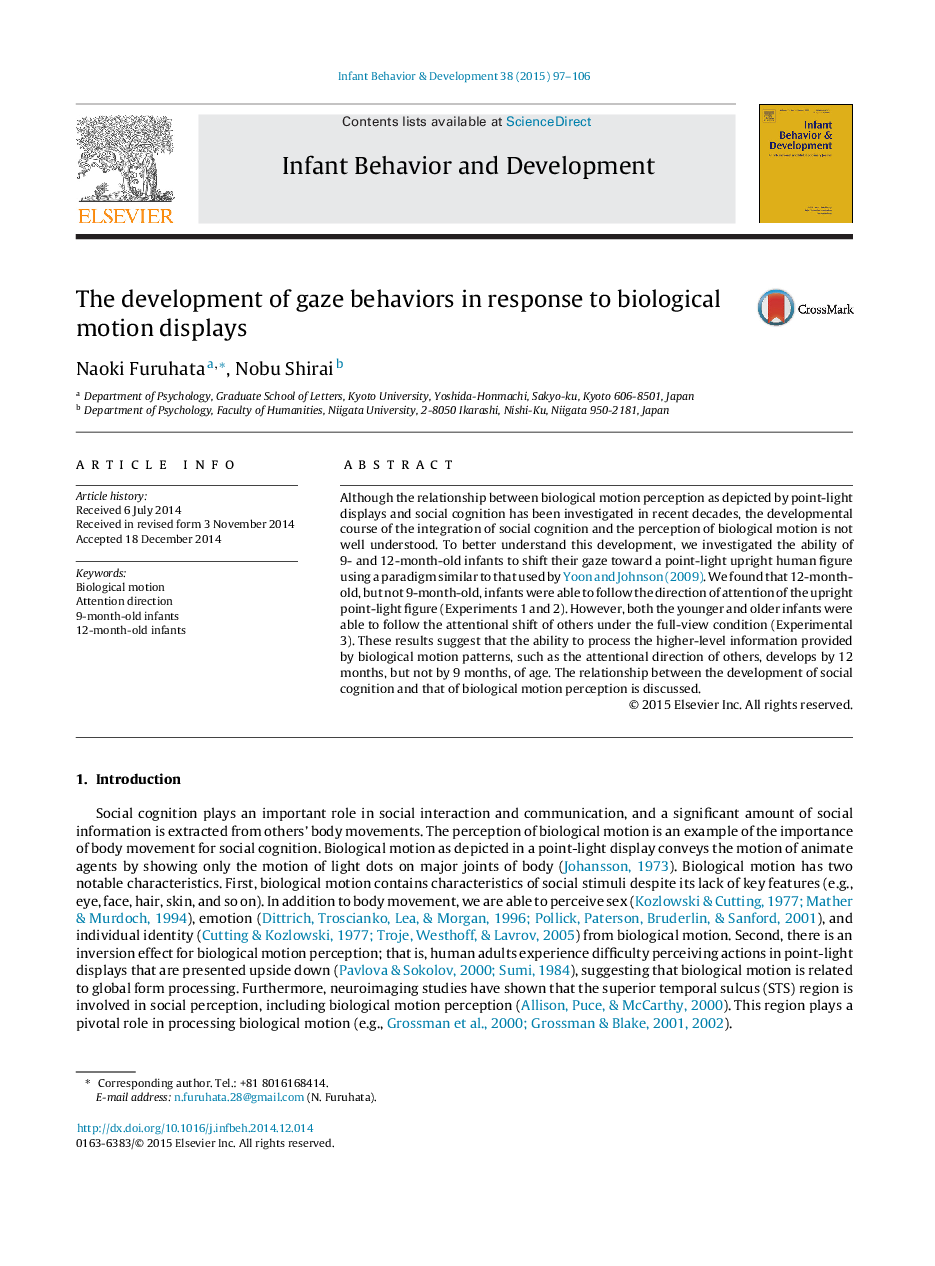| Article ID | Journal | Published Year | Pages | File Type |
|---|---|---|---|---|
| 7273457 | Infant Behavior and Development | 2015 | 10 Pages |
Abstract
Although the relationship between biological motion perception as depicted by point-light displays and social cognition has been investigated in recent decades, the developmental course of the integration of social cognition and the perception of biological motion is not well understood. To better understand this development, we investigated the ability of 9- and 12-month-old infants to shift their gaze toward a point-light upright human figure using a paradigm similar to that used by Yoon and Johnson (2009). We found that 12-month-old, but not 9-month-old, infants were able to follow the direction of attention of the upright point-light figure (Experiments 1 and 2). However, both the younger and older infants were able to follow the attentional shift of others under the full-view condition (Experimental 3). These results suggest that the ability to process the higher-level information provided by biological motion patterns, such as the attentional direction of others, develops by 12 months, but not by 9 months, of age. The relationship between the development of social cognition and that of biological motion perception is discussed.
Keywords
Related Topics
Life Sciences
Neuroscience
Behavioral Neuroscience
Authors
Naoki Furuhata, Nobu Shirai,
